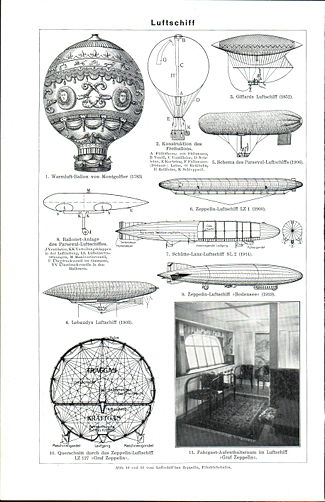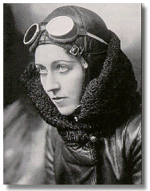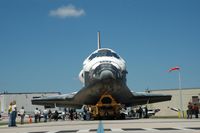- Portal:Aviation
-
- Wikipedia portals:
- Culture
- Geography
- Health
- History
- Mathematics
- Natural sciences
- People
- Philosophy
- Religion
- Society
- Technology
Main page Categories & Main topics Tasks and Projects The Aviation Portal
Aviation, or air transport, refers to the activities surrounding mechanical flight and the aircraft industry. Aircraft includes fixed-wing and rotary-wing types, morphable wings, wing-less lifting bodies, parachutes, as well as lighter-than-air craft such as balloons and airships. Aviation began in the 18th century with the development of the hot air balloon, an apparatus capable of atmospheric displacement through buoyancy. Some of the most significant advancements in aviation technology came with the controlled gliding flying of Otto Lilienthal; then a largest step in significance came with the construction of the first powered airplane by the Wright brothers in the early 1900s. Since that time, aviation has been technologically revolutionized with the introduction of the jet which permitted a major form of transport throughout the world.
Selected article
The Space Race was the competition between the United States and the Soviet Union roughly from 1957 to 1975, involving their efforts to explore space with satellites and to eventually land a human being on the Moon and return him to Earth. Though its roots lie in early rocket technology and in the international tensions following World War II, the Space Race effectively began with the Soviet launch of Sputnik in 1957. The term was coined as an analogy to the arms race. The Space Race became an important part of the cultural and technological rivalry between the USSR and the U.S. during the Cold War. Space technology was a particularly important arena in this conflict, both because of its military applications and due to the psychological benefit of raising morale.Selected picture
Selected biography
Amy Johnson (1 July 1903 – 5 January 1941) C.B.E. was a pioneering British aviatrix.Born in Kingston upon Hull, Johnson graduated from University of Sheffield with a Bachelor of Arts in economics. She was introduced to flying as a hobby, gaining a pilot's A Licence No. 1979 on 6 July 1929 at the London Aeroplane Club. In that same year, she became the first British woman to gain a ground engineer's C License.
Johnson achieved worldwide recognition when, in 1930, she became the first woman to fly solo from England to Australia. She left Croydon on 5 May of that year and landed in Darwin, Australia on 24 May after flying 11,000 miles. Her aircraft for this flight, a De Havilland Gipsy Moth (registration G-AAAH) named Jason, can still be seen in the Science Museum in London. She received the Harmon Trophy as well as a CBE in homage to this achievement, and was also honoured with the No. 1 civil pilot's licence under Australia's 1921 Air Navigation Regulations.
In July 1931, Johnson and her co-pilot Jack Humphreys became the first pilots to fly from London to Moscow in one day, completing the 1,760-mile journey in approximately 21 hours. From there, they continued across Siberia and on to Tokyo, setting a record time for flying from England to Japan. The flight was completed in a De Havilland Puss Moth.
Did you know
...that Communist Romania's Foreign Minister, Grigore Preoteasa, was killed in an aircraft accident after refusing to wear a seat belt during landing?
...that five USAAF airmen were awarded the Medal of Honor following Operation Tidal Wave, a low-level bombing of Romanian oil refineries on 1 August 1943?
... that the Tony Jannus Award for distinguished achievement in commercial aviation is named for the pilot of the first scheduled commercial airline flight?
Aviation News
Wikinews Aviation portal- October 30: Qantas grounds all flights in labour dispute
- September 23: Camp Pendleton, California: helicopter crash kills two US marines
- September 10: Out of space in outer space: Special report on NASA's 'space junk' plans
- September 2: Documents regarding post-9/11 prisoner transport flights released
- August 20: Red Arrows pilot killed at 2011 Bournemouth air display
Today in Aviation
- 1950 - 1Lt Russell Brown shoots down a MiG-15 from his F-80 Shooting Star, the first victory USAF over soviet MiG-15.
Edit today's anniversaries – November Archive – All anniversaries...Selected Aircraft
NASA's Space Shuttle, officially called the Space Transportation System (STS), is the spacecraft currently used by the United States government for its human spaceflight missions. At launch, it consists of a rust-colored external tank (ET), two white, slender Solid Rocket Boosters (SRBs), and the orbiter, a winged spaceplane which is the space shuttle in the narrow sense.
The orbiter carries astronauts and payload such as satellites or space station parts into low earth orbit, into the Earth's upper atmosphere or thermosphere. Usually, five to seven crew members ride in the orbiter. The payload capacity is 22,700 kg (50,000 lb). When the orbiter's mission is complete it fires its Orbital Maneuvering System (OMS) thrusters to drop out of orbit and re-enters the lower atmosphere. During the descent and landing, the shuttle orbiter acts as a glider, and makes a completely unpowered ("dead stick") landing.
- Span: 78.06 ft (23.79 m)
- Length: 122.17 ft (37.24 m)
- Height: 58.58 ft (17.25 m)
- Engines: 3 Rocketdyne Block 2 A SSMEs
- Cruising Speed: 25,404 ft/s (7,743 m/s, 27,875 km/h, 17,321 mi/h)
- First Flight: August 12, 1977 (glider), April 12, 1981 (powered).
- Operational Altitude: 100 to 520 nmi (185 to 1,000 km)
- Number built: 6 (+2 mockups)
Related portals
Associated Wikimedia
Lists relating to aviation General Aircraft (manufacturers) · Aircraft engines (manufacturers) · Airlines (defunct) · Airports · Civil authorities · Museums · Registration prefixes · Rotorcraft (manufacturers) · TimelineMilitary Accidents/incidents Records Categories:- Aviation
- Transport portals
- Portals
Wikimedia Foundation. 2010.





